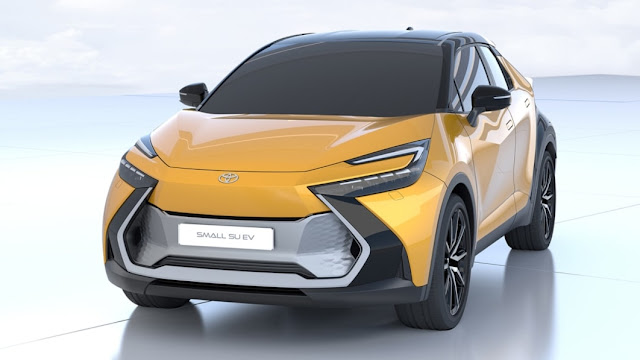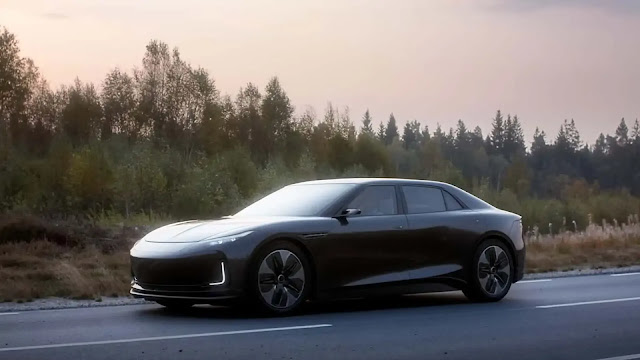Honda RC 30: The Story of the First Superbike Champion
Conceptually derived from the Endurance and F1 World Championship-winning RVF, the VFR 750 R made history by clinching the first two Superbike titles with Fred Merkel in 1988 and '89. Let's delve into its design and achievements.
The story of the Honda VFR 750 R RC 30 begins long before its first unveiling in the world of motorcycling in July 1987. The occasion was none other than the legendary Suzuka 8 Hours race of that year. With its distinctive round headlights, unmistakable livery in HRC colours, slim-spoked white wheels with an unusual 18" rear, and a magnificent single-sided aluminium swingarm, it boasted the words "V4 Force" on its flank.
Its genesis, at least conceptually, can be traced back a few years earlier to a pure racing model bearing the same letters, albeit in a different order: RVF instead of VFR. The Honda RVF 750 was born in 1985 to compete in the Formula TT World Championship, a precursor to Superbike, established after the Tourist Trophy was removed from the GP calendar. It featured a mix of road races like the TT itself and the Ulster GP, as well as circuit races at Misano, Assen, Brno, and Jerez.
The Formula TT regulations for its premier category, F1, allowed motorcycles with prototype chassis and series-derived engines to compete. At Honda, this translated as follows: a 90° V4 engine taken from the VF 750 F road bike and suitably enhanced, fitted into a chassis closely related to the NSR 500 two-stroke Grand Prix machine. In other words, it was the best one could wish for.
And indeed, the results with the RVF didn't take long to materialize. Joey Dunlop and Carl Fogarty secured five titles between 1985 and 1990. Not exactly two unknown riders. Additionally, Dunlop had already clinched three championships between '82 and '84 on the RS 1000, 850, and 750 models.
Honda RC 30: The Story of the First Superbike Champion
An endurance-spec RVF 750 ridden by Wayne Gardner
Honda had a taste for victory, and as the new Superbike championship, to be contested with motorcycles derived entirely from production models, approached, they began designing a bike explicitly for this purpose. As previously mentioned, the name employed the familiar three letters: V, F, and R, with an additional R following the engine displacement to emphasize the racing concept, distinguishing it from its tamer sibling, the VFR 750 F, already on sale since '85.
HONDA VFR 750 R RC 30: TECHNICAL DETAILS
The VFR 750 R RC 30 and the RVF shared several design choices. Firstly, the engine—a 90° V4 with the same bore and stroke dimensions: 70x48.6 mm. The RC 30 housed a four-cylinder powerplant with dual overhead camshafts, four valves per cylinder, titanium connecting rods, wet sump lubrication, and a 6-speed gearbox. It generated an output of 112 horsepower at 11,000 RPM according to the dyno.
Another shared feature between the two bikes was the chassis architecture—a perimeter aluminium frame with a double upper beam. However, they differed in the swingarm design, with the RVF sporting a traditional double-sided swingarm while the RC 30 featured a Pro-Arm single-sided swingarm with linkage. The front suspension of the RC
30 comprised an adjustable Showa 43mm conventional fork with a 17" front wheel. The braking system consisted of twin ventilated discs measuring 310mm in diameter, gripped by Nissin 4-piston callipers. Overall, the RC 30 weighed 185 kg dry. It was priced at 12,000 euro on the market.
Honda RC 30: The Story of the First Superbike Champion
This was Honda's formula to enter the newborn championship, combined with an extreme riding position and dynamic qualities that prioritized overall balance over pure performance. As we will see, it was a successful choice.
THE SUPERBIKE VERSION...
To field the bike on the grid, however, there was an additional step to complete, and not a minor one. It needed to be prepared as a Superbike version. For this purpose, an HRC special kit was available at a cost of 13.5 million lire, targeting private teams aiming to compete on the international scene. Initially, in the early years of the Superbike championship, Honda did not participate officially, despite having specifically designed and built the RC 30. The bike was actually born in the racing department in Asaka, following a different process than all other road bikes. Consequently, it can be rightfully identified as the first homologation special—a motorcycle produced and sold solely to qualify as a production derivative and thus obtain homologation for Superbike racing.
Let's talk about the HRC preparation kit. It included an extensive list of components, such as new camshafts, pistons, cylinder heads, crankshaft, ultra-light magnesium parts, revised gear ratios, exhaust system, suspension, a different, shorter swingarm, brakes, and much more. In short, it was an extensive tuning package that transformed the bike, providing a power increase that allowed the Superbike version of the RC 30 to deliver approximately 150 horsepower.
THE RESULTS OF THE HONDA RC 30 IN SBK
The best interpreter of the Honda RC 30 was and will always be Oscar Rumi from Bergamo, owner of the RCM team, which guided American rider Fred Merkel to back-to-back world titles in '88 and '89. These championships were won without clear dominance, especially the first one, when Merkel secured a narrow victory over Fabrizio Pirovano with "only" two race wins. Contemporary reports depicted the RC 30 not as the most powerful bike but as the most balanced one, capable of winning through consistent results from both itself and its lead rider against Yamaha and Yamaha-powered Bimota machines. The latter achieved better results in individual races but fell short over the course of the entire season. The situation changed in 1989 when Honda, with Merkel, Belgian rider Stéphane Mertens, and Spanish rider Alex Vieira, dominated the championship.
From 1990 onwards, the RC 30's performance gradually declined, with Merkel being hampered by an injury mid-season and unable to keep up with the increasingly faster Ducati 851 and 888 bikes. From 1991 to 1993, the RC 30 achieved only a single podium finish. At that point, due to the bike's evident technical inferiority and the fact that it was not officially supported by the factory, Honda decided to retire the VFR 750 R. It was replaced for the 1994 season by a new, theoretically lethal weapon: the RVF 750 RC 45. But that's another story.
#HondaVFR750R, #RC30, #HondaMotorcycles, #SuperbikeHistory, #VintageBikes, #MotorcycleLegends, #ClassicHonda, #RacingHeritage, #LegendaryBikes, #CollectorMotorcycles, #V4Engine, #HondaPerformance, #MotorcycleEnthusiast, #IconicDesign, #MotorcycleHistory, #RaceWinningBike, #HondaRC30, #SuperbikeChampion, #MotorcycleCollectibles, #BikeRestoration






Comments